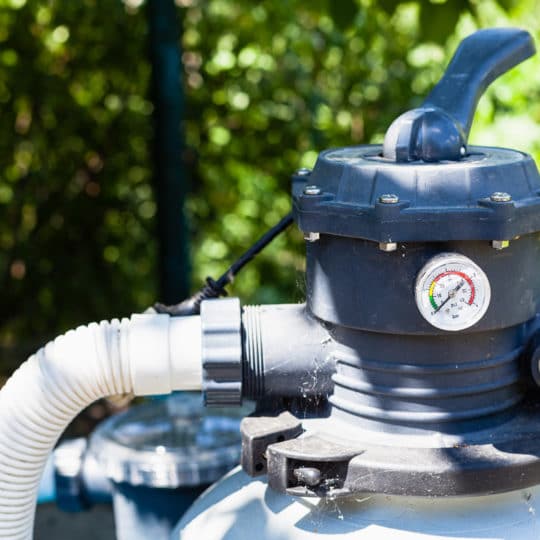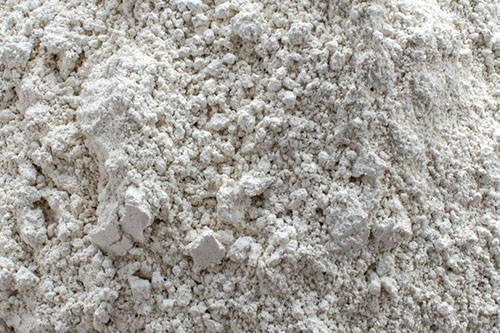How Diatomaceous Earth Filtering Improves Water Clarity and Purity
How Diatomaceous Earth Filtering Improves Water Clarity and Purity
Blog Article
Enhance Your Water Top Quality: The Power of Diatomaceous Earth Filtering Explained
Among these, diatomaceous earth (DE) filtering system has actually arised as a notable competitor, leveraging the special homes of fossilized diatoms to achieve remarkable filtration. What collections diatomaceous earth apart from typical filters, and how can it be efficiently implemented?
What Is Diatomaceous Planet?
Diatomaceous planet, a normally happening sedimentary rock, is largely made up of the fossilized remains of diatoms, a kind of microscopic algae. These organisms grow in water environments and have silica-based cell wall surfaces, which add to the unique framework of diatomaceous planet. The stratified rock is usually light, porous, and chalky in appearance, making it an efficient material for numerous applications.
Diatomaceous earth is identified into two major types: food quality and commercial grade. Food quality diatomaceous planet consists of a smaller focus of crystalline silica and is generally secure for human usage and usage in farming. On the other hand, industrial grade diatomaceous earth has higher degrees of crystalline silica and is used in applications such as filtering, pest control, and insulation.
The distinctive properties of diatomaceous earth, including its high porosity and huge area, make it an important resource in filtering procedures. Its ability to catch fragments and contaminants while permitting liquids to pass through has actually established it as a favored product in various filtering systems. Recognizing the make-up and qualities of diatomaceous planet is essential for acknowledging its benefits in enhancing water high quality.
Just How Diatomaceous Earth Filtering Functions

Exactly how does the filtering procedure making use of diatomaceous earth accomplish impressive performance? The efficiency of diatomaceous planet (DE) filtering comes from its one-of-a-kind physical homes and framework. Composed of fossilized remains of diatoms, DE is a fine, porous powder with a high area. When made use of in filtration systems, it functions as a mechanical filter, capturing bits and impurities as water travels through.
The filtration process begins when water is presented to a DE filter, where it comes across a layer of diatomaceous planet. The delicately structured fragments develop a mesh-like obstacle that records strong impurities, consisting of microorganisms, algae, and debris. The small pore sizes within the DE also contribute to its ability to keep even microscopic particles, improving the total pureness of the filtered water.
Additionally, DE has a natural affinity for soaking up specific natural products and toxins, better improving water quality (diatomaceous earth filtering). As the DE layer loaded with trapped debris, it can be conveniently backwashed or replaced, preserving optimum purification effectiveness. Generally, the mix of DE's physical homes and its ability to absorb contaminations makes it a powerful tool in attaining efficient water filtration

Advantages of Diatomaceous Earth Filtering
The purification abilities of diatomaceous planet not only improve water pureness yet also supply a series of advantages that make it a preferred option in various applications. Among the main benefits is its extraordinary capability to remove impurities, including bacteria, algae, and sediment, consequently boosting overall water quality. This filtration technique is very reliable, with a huge surface location our website that enables exceptional absorption and retention of contaminations.
Furthermore, diatomaceous planet is a safe and all-natural product, making it an environmentally friendly choice for water filtering. Its usage removes the requirement for artificial additives or rough chemicals, promoting a healthier environment. The longevity of diatomaceous earth filters is one more considerable advantage; they require less regular substitute compared to traditional filtration systems, resulting in set you back financial savings with time.
In addition, diatomaceous earth can improve the taste and odor of filtered water, providing a more positive alcohol consumption experience. Its versatility allows for applications past drinking water, including swimming pools and tank farming, where it assists to preserve clarity and hygiene. Overall, diatomaceous planet filtering discover this info here attracts attention as a reliable and sustainable remedy for boosting water quality.
Contrasting Diatomaceous Planet to Other Filters
When reviewing various water purification methods, diatomaceous planet sticks out for its distinct residential properties contrasted to traditional filters such as activated carbon and mechanical systems. Diatomaceous planet (DE) filters utilize the porous framework of fossilized diatoms to efficiently remove bits, germs, and other contaminations from water. This extremely effective filtration approach can capture contaminants as little as 1 micron, considerably exceeding many typical filters.
On the other hand, activated carbon filters largely target chlorine, unpredictable organic compounds (VOCs), and specific hefty metals however might not successfully remove microorganisms or larger particles. While they master boosting taste and smell, they commonly need constant replacement and maintenance. Mechanical filters, on the other hand, use physical obstacles but might battle with finer bits, bring about decreased efficacy gradually.
In addition, diatomaceous earth filters are qualified of taking care of larger quantities of water and can be regenerated, using a sustainable alternative for lasting use. Overall, diatomaceous planet presents a compelling option, incorporating high filtering ability with marginal environmental impact, making it an increasingly popular option for those looking for remarkable water top quality.
Just How to Apply Diatomaceous Earth Filtering

Installment entails connecting the filter to your water supply, commonly complying with the manufacturer's guidelines for optimal configuration. Once set up, prepare the diatomaceous earth by mixing it with water to produce a slurry.
Display the stress gauge to identify when to change or charge the diatomaceous earth filter media, as boosted stress indicates clogging. By sticking to these standards, you can successfully execute diatomaceous planet filtering to improve your water high quality, giving a much safer and cleaner water supply for your needs.
Final Thought
In verdict, diatomaceous planet filtering presents a very efficient technique for enhancing water top quality. The longevity and environmental benefits better strengthen diatomaceous earth as a sensible option for varied water applications.
The filtering process starts when water is presented to a DE filter, where it encounters a layer of diatomaceous planet.When examining different water filtration techniques, diatomaceous earth stands out for its one-of-a-kind residential or commercial properties compared to traditional filters such as activated carbon and mechanical systems.Applying diatomaceous earth filtering system requires mindful planning and focus to detail to guarantee ideal performance and water high quality. diatomaceous earth filtering. By adhering to these standards, you can successfully carry out diatomaceous earth filtering system to enhance your water high quality, offering a more secure and cleaner water supply for your requirements
In verdict, diatomaceous earth filtering system provides a very effective approach for boosting water top quality.
Report this page